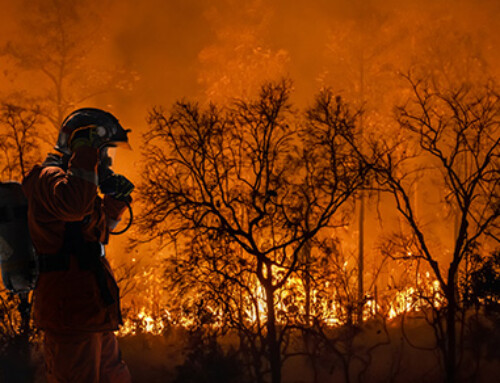We’ve had a number of clients ask us questions since the wildfires on tree loss and what that means in terms of determining a casualty loss on property. Below is an FAQ from the IRS which should hopefully provide some good information. If you have any questions, feel free to ask your Linkenheimer CPA.
Q: How does a taxpayer determine a casualty loss from damaged trees and other landscaping on personal-use residential property when that loss is attributable to a disaster?
A: In determining the amount of a casualty loss from damage to personal-use residential property, trees and other landscaping are considered part of the entire residential property, and are not valued separately or assigned a separate basis, even if purchased separately.
To compute your casualty loss:
Determine your adjusted basis in the entire residential property before the casualty. Your basis is generally the cost of the property, adjusted for improvements and certain other events. For more information on determining your adjusted basis, see Publication 530, Tax information for First-Time Homeowners, and Publication 551, Basis of Assets
Determine the decrease in fair market value of the entire residential property as a result of the casualty.
From the smaller of these two amounts, subtract insurance and any other form of compensation received or expected to be received.
For residential property, damaged and destroyed trees and other landscaping may adversely affect the fair market value of the entire property by reducing the curb or overall appeal of the property.
One method of determining the decrease in fair market value is to compare an appraisal of the entire residential property, including trees and other landscaping, before the damage caused by the casualty to an appraisal of the entire residential property after the damage caused by the casualty, including damage to trees and other landscaping. Valuation of the damage to a tree by an arborist does not determine the decrease in fair market value of the entire property.
Alternatively, the cost of cleaning up and restoring the residential property, including trees and other landscaping, to its condition before the casualty may be used as evidence of the decrease in fair market value, if the clean-up, repairs, and restoration are actually done, are not excessive, are necessary to bring the property back to its condition before the casualty, take care of the damage only, and do not cause the property to be worth more than before the casualty. For example, if these requirements are satisfied, the cost of removing destroyed or damaged trees (minus any salvage received), pruning and other measures taken to preserve damaged trees, and replanting necessary to restore the property to its approximate value before the casualty may be acceptable as evidence of the decrease in fair market value caused by the casualty. You may not include in your cost of cleaning up and restoring your property the cost of purchasing any capital asset, such as a compact loader or tractor, or the value of the time you spend cleaning up your own property.
The following examples illustrate the points discussed above:
Example 1: A taxpayer lost a large tree in her backyard due to a disaster, but sustained no other property damage. An arborist valued the damage to the tree at $3,000. The taxpayer spent $600 to remove the tree from the yard and grind the stump. Insurance paid $500 for debris removal.
The value of the damage to the tree determined by the arborist does not qualify as a measure of the casualty loss because it does not reflect the decrease in the fair market value of the residential property as a whole, including the residence, land, and improvements. The taxpayer may obtain an appraisal of the entire property to determine any decrease in value resulting from the loss the tree.
Alternatively, the taxpayer may use costs incurred to clean up and to remove the tree as a measure of the decrease in the fair market value of the property provided the costs are not excessive, are necessary to bring the property back to its condition before the casualty, take care of the damage only, and do not cause the property to be worth more than before the casualty. The taxpayer would subtract from the loss any insurance reimbursement for tree removal and clean-up expenses. Under this alternative, the taxpayer has a casualty loss of $100.
Example 2: A taxpayer had a large tree that fell during a disaster and crushed a carport. Among many trees on the property, it was the only tree that was damaged. The loss of this tree does not does not affect the fair market value of the entire property. Homeowners’ insurance reimbursed the taxpayer all costs for repairing the carport and removing the tree.
Insurance paid for all repair costs to bring the property back to its pre-casualty condition and value. Therefore, the taxpayer has no casualty loss.
For more information on casualty losses, see Publication 547, Casualties, Disasters & Thefts
https://www.irs.gov/businesses/small-businesses-self-employed/faqs-for-disaster-victims-casualty-loss-valuations-and-sections-165-i[/fusion_builder_column][/fusion_builder_row][/fusion_builder_container]







Leave A Comment